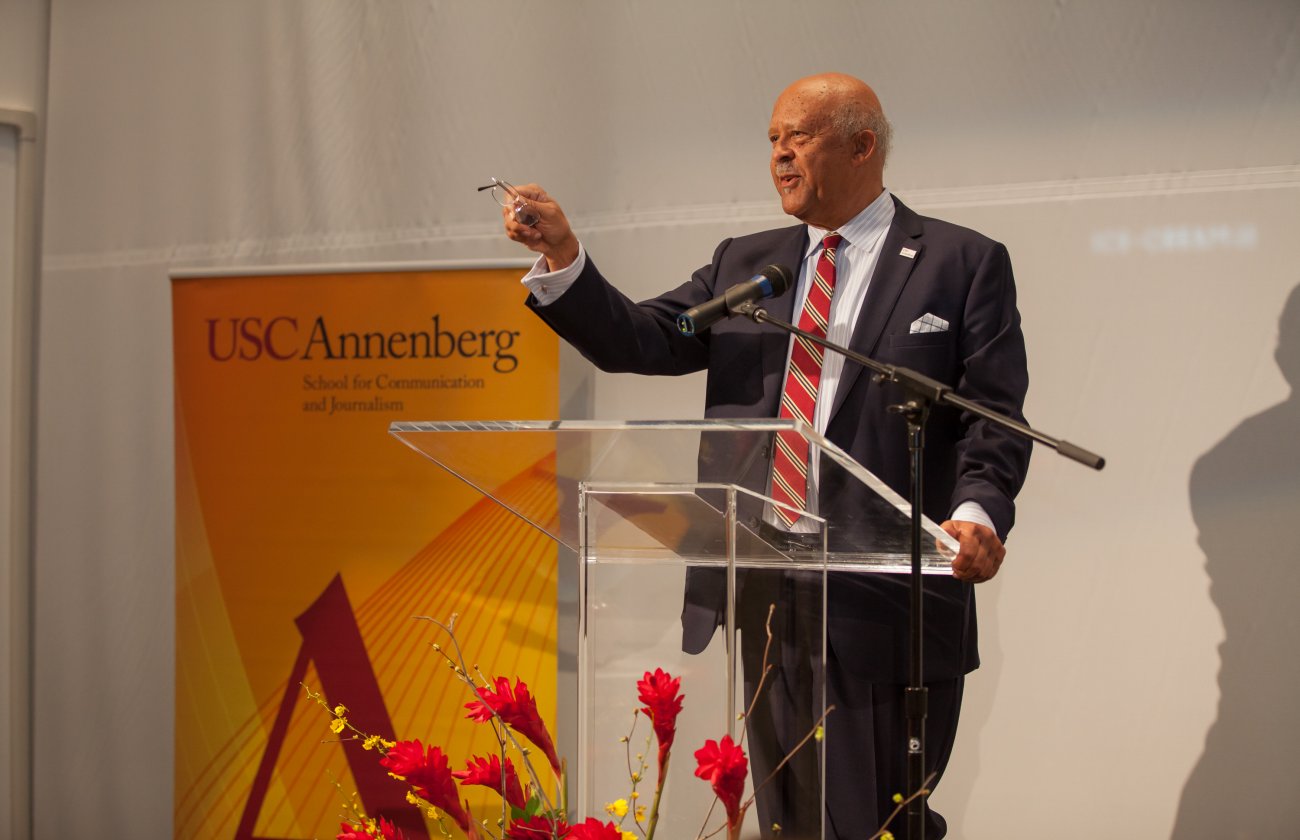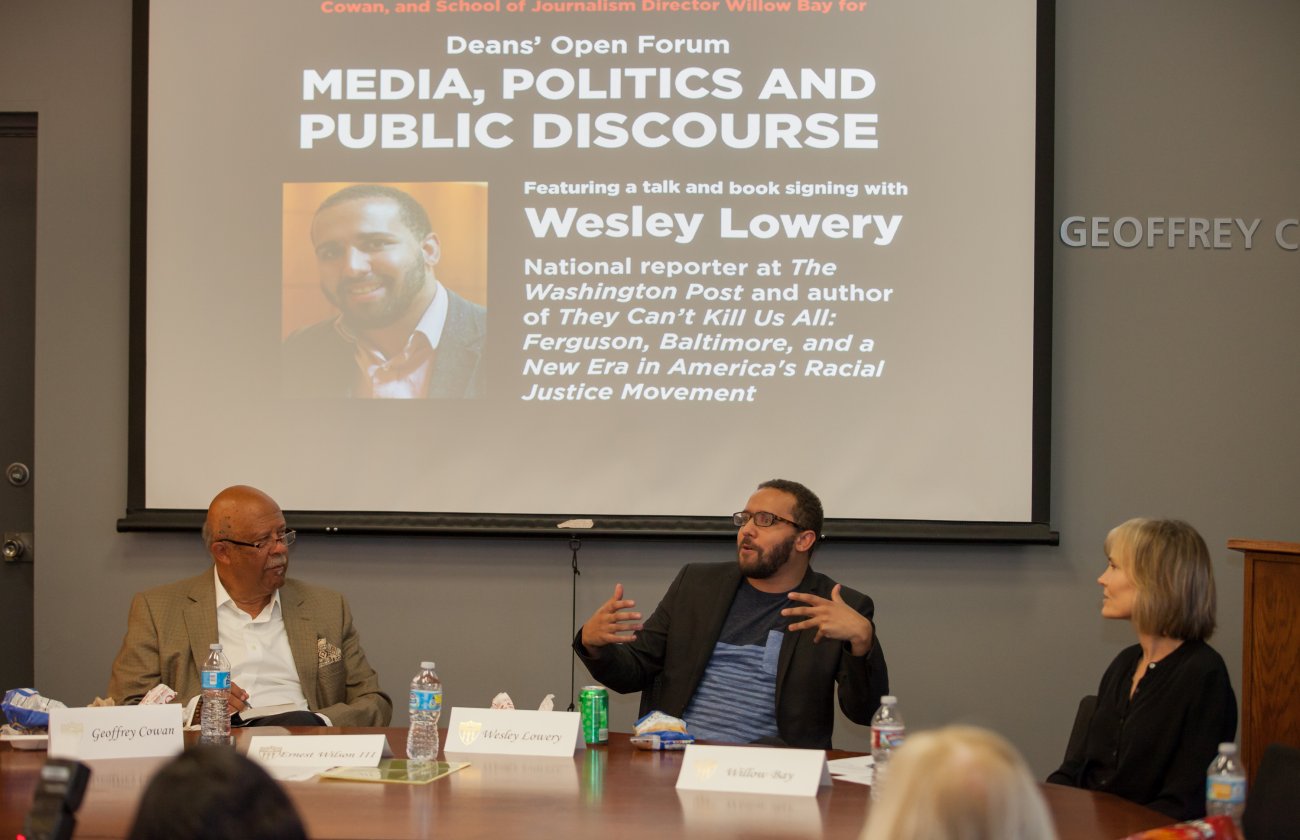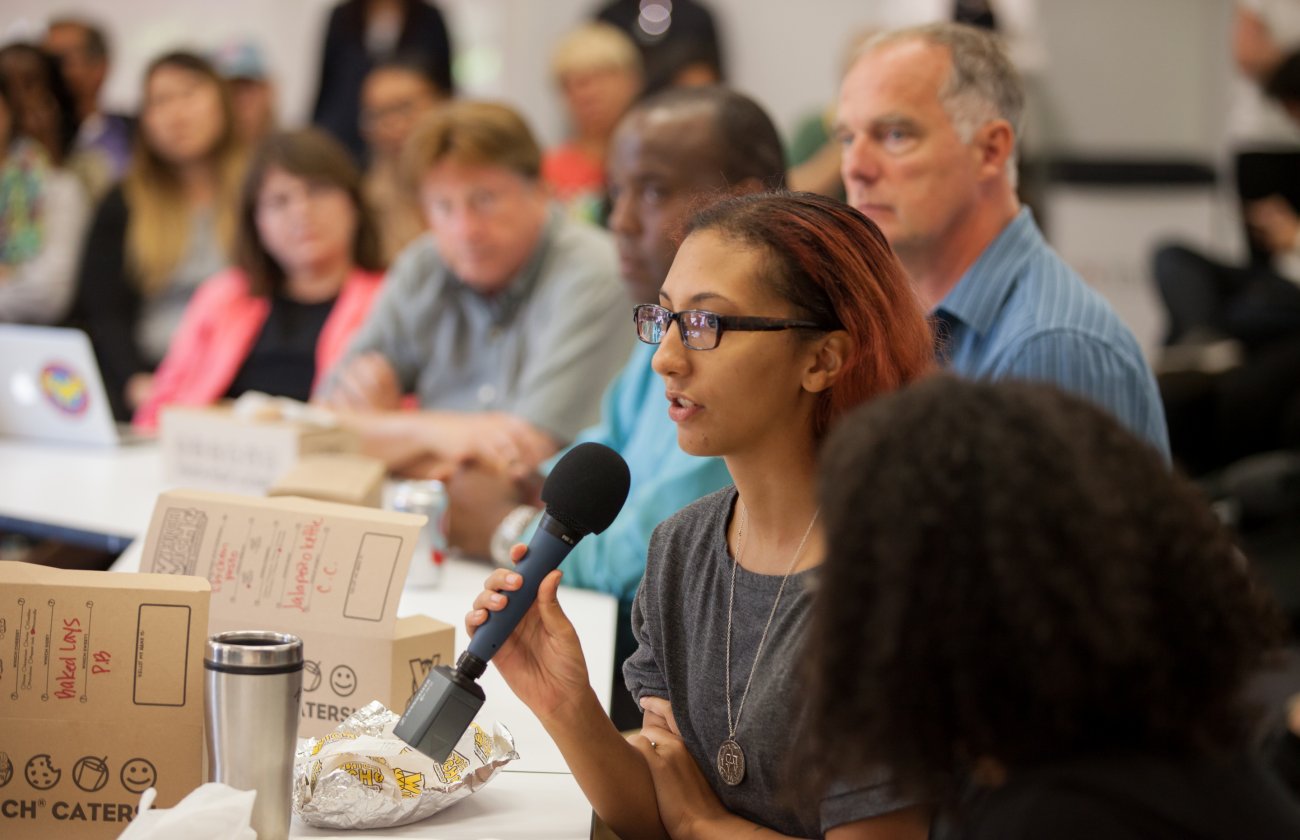Los Angeles leaders in the creative world came to USC Annenberg on Thursday to discuss the role communication plays in the fields of art and architecture.
The discussion, "Architecture as Communication," took place in the Annenberg Auditorium among Thom Mayne, a USC alumnus and the principal architect at the Santa Monica design company Morphosis; Michael Govan, the director and CEO of the Los Angeles County Museum of Art; Larry Gross, the director of the School of Communication at USC Annenberg; and Qingyun Ma, the dean of the USC School of Architecture.
The event was produced as part of Visions and Voices: The USC Arts & Humanities Initiative. Although many art forms can be collaborative or individual, architecture completely depends on the relationships between architect, client, contractors and eventually, the public, said USC Annenberg Dean Ernest J. Wilson III. We choose to visit some art forms – paintings, photos, stories – when we have the time, Gross said.
But architecture is more immersive, shaping our daily lives in unexpected ways and sending messages about values, society and ideas. A successful project requires making peace between private and public vision, Mayne said. Balancing what your ideas with your client's goals is an "insanely collaborative process," and key to a successful project. Mayne is one of two USC graduates to have received the Pritzker Prize, the Nobel Prize for architecture. The other is Frank Gehry.
Mayne's California work includes the CalTrans District 7 building in downtown Los Angeles and the San Francisco Federal Building. But compromise should only go so far, Mayne said: architecture, like any art form, should be edgy enough to spark reactions and discussion. He referred to his CalTrans project, which was panned and praised worldwide when it opened in 2004.
"There's a huge reciprocity between your audience and you," Mayne said. "You want some sort of pushback that starts a dialogue. It would absolutely crush me if there were no opinions. That's what architecture is for. That's what art is for."
Much of that dialogue springs from the importance of making meaning and creating a sense of place within your art, Govan said.
He cited "Urban Light," the iconic bloc of streetlamps outside LACMA, as an example of using ordinary objects to add meaning and depth to a pre-existing area. The installation reflects the diversity of its city and its history – all the lamps are refurbished from Los Angeles streets in the early 1900s – gives a more real vibe than the art museums.
"What is architecture beyond shelter?" Govan said. "It's communication. It's about meaning-making in the built environment."








